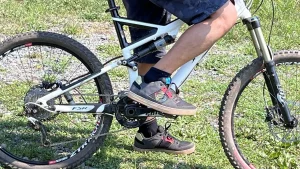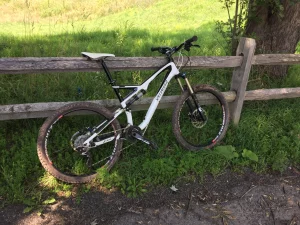Cycling Terminology (Common Terms Cyclists Use)
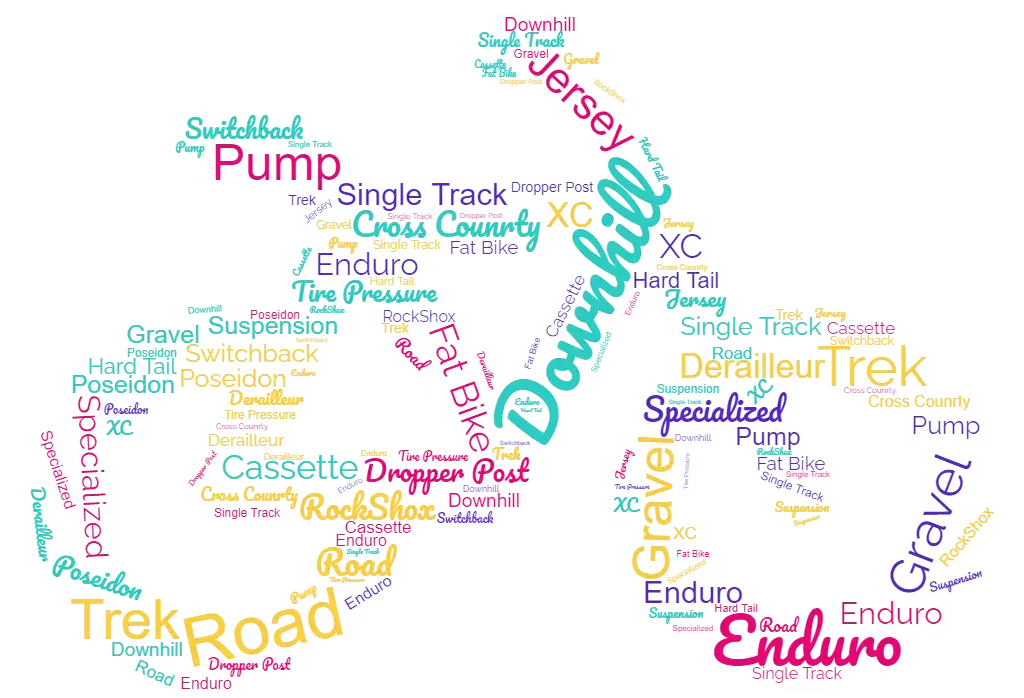
Table of Contents
Common Cycle Terms
- Frame: The main structural component of a bicycle, typically made of materials like aluminum, steel, or carbon fiber.
- Fork: The part of the frame that holds the front wheel and allows for steering.
- Wheels: The circular components that rotate around the axle, allowing the bicycle to move.
- Tires: The rubber components that fit around the wheels, providing traction and cushioning.
- Brakes: The devices used to slow down or stop the bicycle, typically activated by squeezing levers on the handlebars.
- Chain: The metal component that transfers power from the pedals to the rear wheel, allowing the bicycle to move forward.
- Crankset: The component that connects the pedals to the chain, allowing the rider to transfer power to the bicycle.
- Cog: A toothed wheel that engages with another toothed wheel. Not to be confused with a sprocket.
- Down tube: The lower frame tube that runs from the headset to the bottom bracket.
- Pedals: The platforms on which the rider places their feet to propel the bicycle forward.
- Handlebars: The part of the bicycle that the rider holds onto for steering and balance. They come in various styles and shapes, depending on the type of bicycle and rider preference.
- Fat tyre bikes: Any bike with wide tyres; mountain bikes and budget, mountain bike-style bikes.
- Saddle: Also known as the seat, the saddle supports the rider’s weight and provides a comfortable seating position.
- Seat post: The component that connects the saddle to the bicycle frame, allowing for adjustment of the saddle height.
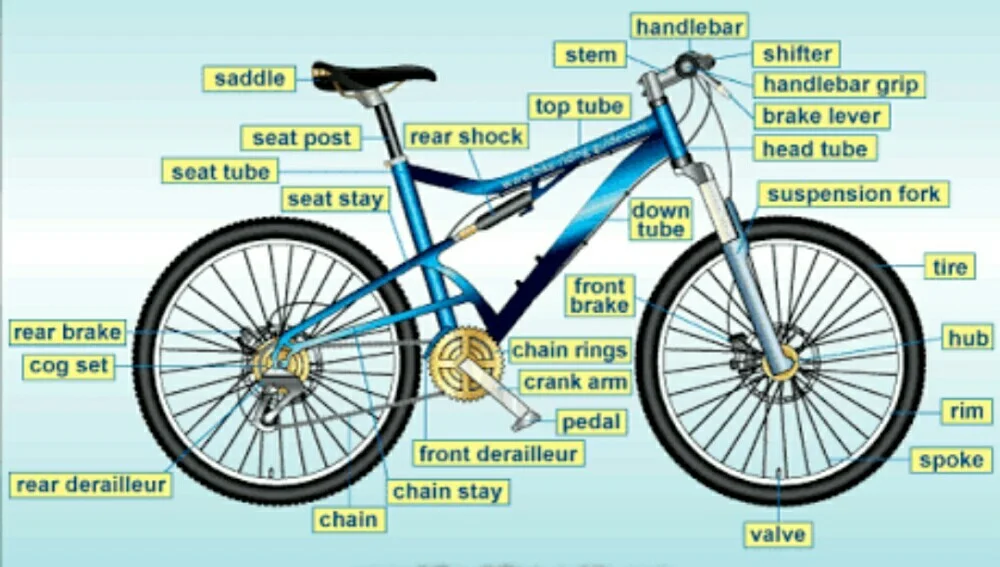
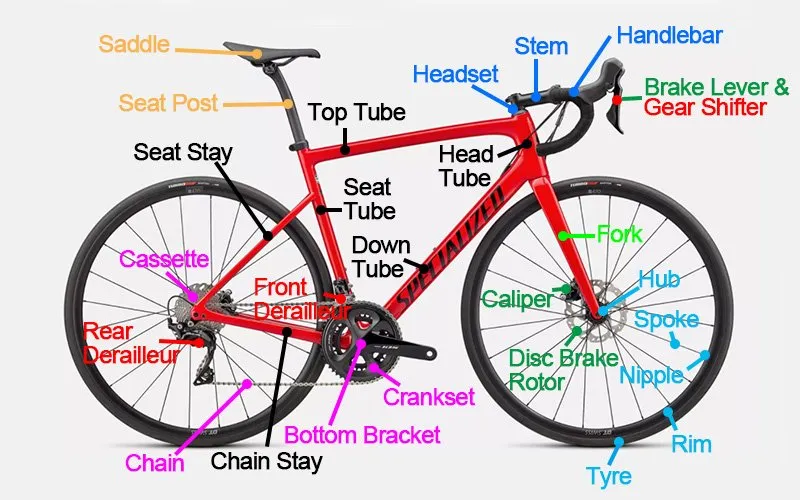
- Stem: The part that connects the handlebars to the bicycle’s fork, allowing for adjustment of the handlebar height and reach.
- Headset: The component that connects the fork to the frame, allowing for smooth steering and rotation of the fork.
- Cantilever brake: Brake that attaches to the frame tubes either side of the rim and has two separate pivots; used on hybrids and on older cyclocross and mountain bikes.
- Gears: A system of toothed wheels and chains that allow the rider to adjust the level of resistance while pedaling, making it easier to climb hills or maintain speed on flat terrain.
- Derailleurs: The components that move the chain between different gears, allowing the rider to shift gears while riding.
- Bikepacking: A plan to prepare for any bike ride that takes place over multiple days. Idea is to be self-sufficient by carrying all your food and tools stuff on the bike.
- Cockpit: Term for the handlebar and stem, and sometimes the saddle and seatpost too. Used by pretentious riders who consider their cycles to be fighter planes.
- Belt drive: Bike transmission using a reinforced, toothed rubber belt instead of a chain.
- Fixie: A fixed-gear bike, or a fixie, is a bike with no gears.
- Brifter: The integrated brake and gear shifter unit on drop handlebars. Usually found on road and gravel bikes
- Groupset: All the components making up the drivetrain of your bike, and is responsible for essentially transferring the power from your legs to the wheels. It mainly consists of the crankset, the bottom bracket, derailleurs, chain, cassette, brake levers and the brakes.
- Hex Wrench: The most common type of wrench used on a bike. Comes in various sizes for the different sizes of fasteners on the various components.
- Track Stand: A technique to maintain balance while the bicycle remains almost stationary. This tests the rider’s balance and bike control.
Mountain Biking Terms
- Trail: The path or route a mountain biker rides on.
- Singletrack: A narrow trail that is roughly the width of a single bike.
- Downhill: A type of mountain biking that involves descending steep and technical terrain at high speeds.
- Cross-country (XC): A type of mountain biking that involves riding various terrains, including uphill and downhill sections, over long distances.
- Enduro: A type of mountain biking that combines elements of downhill and cross-country, focusing on timed downhill sections with untimed uphill sections.
- All-mountain: A type of mountain biking that involves riding a variety of terrains, including technical descents, with a focus on enjoyment rather than competition.
- Berm: A banked turn on a trail that allows riders to maintain speed while cornering.
- Switchback: A tight, hairpin turn on a trail, often used to negotiate steep terrain.
- Dropper post: A type of seat post that can be adjusted up or down while riding to optimize pedaling efficiency and control on varying terrain.
- Suspension: A system of springs and shock absorbers on a mountain bike that helps absorb impacts and maintain traction on rough terrain.
- Tire pressure: The amount of air pressure in a mountain bike tire, which can be adjusted to optimize traction, comfort, and rolling resistance.
- Flats: Refers to pedals that are without cleats or clipless. Mountain bikers prefer flats as that is easier to dismount during tricky sections on the trails.
- Technical: Refers to trails or sections of trails that are challenging due to obstacles such as rocks, roots, or steep descents.
- Drop: A sudden change in elevation, typically encountered on downhill trails.
- Jumps: Built features on a trail designed for riders to launch their bikes off the ground.
- Drops: Descents that have a vertical element, often requiring riders to jump off or drop their bike down.
- Rock Garden: A section of trail littered with large rocks or boulders, requiring careful navigation.
- Full Suspension: A mountain bike with both front and rear suspension, designed to absorb impacts and provide a smoother ride.
- Hardtail: A mountain bike with only front suspension, typically lighter and more efficient for climbing.
- Freeride: A style of mountain biking that focuses on technical descents, jumps, and other advanced features, often performed on specially built trails or in terrain parks.
- Trailhead: The starting point of a trail.
- Pump Track: A circuit of rollers, berms, and jumps designed to be ridden without pedaling, using momentum gained from pumping the terrain.
- Bunny Hop: A technique where the rider lifts both wheels off the ground simultaneously to clear obstacles.
- Manual: Lifting the front wheel of the bike off the ground without pedaling, using body weight and balance.
- Granny Gear: The smallest chainring on a mountain bike, used for climbing steep hills.
- Shred: Riding aggressively and skillfully on challenging terrain.
Knobblies: Deep-treaded tyres for riding off road.
Road Cycling Terms
- Peloton: A group of riders cycling closely together, often in a race.
- Drafting: Riding closely behind another cyclist to take advantage of the reduced wind resistance, making it easier to maintain speed.
- Paceline: A formation of riders in a line, each taking turns riding at the front (pulling) before peeling off and rejoining the back of the line.
- Cadence: The number of pedal revolutions per minute (rpm).
- Chainring: A toothed ring attached to the crankset that drives the chain, usually referred to by the number of teeth (e.g., a 53-tooth chainring).
- Cassette: A cluster of gears on the rear wheel, consisting of multiple cogs with varying numbers of teeth.
- Clipless pedals: A pedal and shoe system that locks the rider’s shoe to the pedal, allowing for greater pedaling efficiency.
- Drop bars: The type of handlebar commonly found on road bikes, with a curved shape that allows for multiple hand positions.
- Time Trial (TT): A race or event where cyclists ride solo against the clock.
- Presta valve: A type of valve commonly found on road bike inner tubes, typically narrower than a Schrader valve.
- Bonk: A state of extreme fatigue and exhaustion caused by the depletion of glycogen stores during a race.
Racing Terms
Cycle racing has a rich vocabulary that can be both exciting and intimidating for newcomers. Here are some common cycle racing terms to help you navigate the world of competitive cycling:
- Attack: A sudden acceleration by a rider or group of riders, attempting to break away from the main group.
- Breakaway: A group of riders that has successfully separated from the main group (peloton) in a race.
- Domestique: A rider who works for the team leader, protecting them from the wind, fetching water, and setting the pace.
- Echelon: A diagonal formation of riders adopted in crosswinds, allowing each rider to draft behind the rider ahead of them.
- General Classification (GC): The overall standings in a stage race, determined by the cumulative time of each rider across all stages.
- Podium: The top three finishers in a race or stage, who are awarded prizes and recognition.
- Sprint: A high-speed, all-out effort at the end of a race or stage, typically contested by riders specializing in sprinting.
- Lead-out: A tactic where a team organizes a high-speed train to launch their sprinter towards the finish line.
- Stage: A single race within a larger multi-day event, such as the Tour de France.
- Time gap: The time difference between riders or groups in a race, often measured in seconds or minutes.
- Bonk: A state of extreme fatigue and exhaustion caused by the depletion of glycogen stores during a race.
- Criterium (Crit): A short-distance race held on a closed circuit, usually in urban areas.
- Directeur Sportif (DS): The team manager in a cycling race, responsible for making strategic decisions during the race.
- Feed Zone: A designated area along the race route where riders can collect food and drink from team staff.
- Gap: The distance between riders or groups of riders in a race.
- Gruppetto: A group of riders who form together towards the back of a race, typically in mountain stages, to finish within the time limit.
- King of the Mountains (KOM): The title given to the best climber in a stage race, determined by points earned on designated climbs throughout the race.
- Peloton: The main group of riders in a race, also referred to as the pack or bunch.
- Time Trial (TT): A race or event where cyclists ride solo against the clock, typically on a specialized time trial bike.
- Wheel sucker: A derogatory term for a rider who consistently drafts off others without taking turns at the front.
- Bonification: Time bonuses awarded to riders at intermediate sprints or stage finishes.
- Drop: When a rider can no longer keep pace with the peloton or breakaway group and falls behind.
- Chase group: A group of riders attempting to catch up to a breakaway or lead group.
- Lanterne Rouge: The last-placed rider in a race, often used in the context of the Tour de France.
- Flamme Rouge: The red pennant that marks one kilometer to go in a race.
Tips for Improving Your Understanding of Cycling Phrases
Improving your understanding of cycling phrases can enhance your enjoyment of the sport and help you communicate effectively with fellow cyclists. Here are some tips to improve your understanding:
- Read Cycling Literature: Explore books, magazines, and online articles about cycling. Pay attention to how cycling terminology is used in various contexts.
- Watch Cycling Races: Watch professional cycling races on television or online streaming platforms. Listen to commentators as they explain race tactics and terminology.
- Join Cycling Communities: Participate in cycling forums, social media groups, or local cycling clubs. Engage in discussions with experienced cyclists who can explain terms and share their knowledge.
- Attend Cycling Events: Attend local races, group rides, or cycling clinics. Take the opportunity to observe and ask questions about specific terms or strategies.
- Use Cycling Apps and Websites: Explore cycling-specific apps and websites that provide information about training, equipment, and racing. Many of these resources include glossaries or explanations of common cycling terms.
- Practice Active Listening: When riding with other cyclists, pay attention to the language they use. Ask for clarification if you hear a term you’re unfamiliar with.
- Learn from Experienced Cyclists: Seek advice from more experienced cyclists, coaches, or mentors. They can offer insights into cycling terminology and how it applies in real-world situations.
- Study Race Coverage: Watch replays of cycling races and pay attention to the commentary. Analyze race tactics, strategies, and the use of cycling phrases in different race situations.
- Keep a Glossary: Create a personal glossary of cycling terms and their definitions. Refer to it regularly and add new terms as you encounter them.
- Practice Using Cycling Phrases: Incorporate cycling terminology into your own conversations and writing. Practice explaining concepts to others to solidify your understanding.
By incorporating these tips into your cycling journey, you’ll gradually build a comprehensive understanding of cycling phrases and terminology.
FAQ
These are some common terms people get confused with –
Frame vs Frameset
A frameset consists of the frame and fork of a bicycle and sometimes includes the headset and seat post.
Dropping vs Drop bar vs Drop Handlebar vs Dropper post
Dropping is to drop someone slower during a group ride. Drop bar is the curved handlebar usually found on a road or gravel bike or a track bike. Dropper post is a hydraulic adjustable seat post.
Seat vs Seat Post
Seat is where you sit on the bike. Seat post is the stem connecting the seat to the bike frame.
Cassette vs Chainrings
Cassette is a collection of sprockets on the rear wheel. Chainring are the big sprockets on the cranks, driven by the pedals The pedals turn the chainrings, which in turn moves the chain to turn the cassette, thereby moving the rear wheel.
So Now You are a Cycling Pro
I hope you found this useful and informative. Please check out my other cycling posts on carbon vs aluminum bike frames, tips on choosing a gravel bike, or how to wash your bike. And a related podcast on injuries and prevention.
